Seeds in general are very healthy, and aside from that, they can serve as an ingredient in almost any type of dish, whether it is savory or sweet.
A special place in the world of seeds is reserved for sesame seeds. Although they are most commonly used in Asian cuisine, they are becoming very popular in our cooking world as well.
From baked dishes, cooked meals, roasted dishes, and salads, to sweet dishes and desserts, they can cover it all.
But what if you run out of sesame seeds in the middle of a complicated recipe, or one of your family members has a seed allergy?
There is no room for worry because there are excellent substitutes for sesame seeds waiting to be incorporated into your favorite dish.
1. Black/White Sesame Seeds
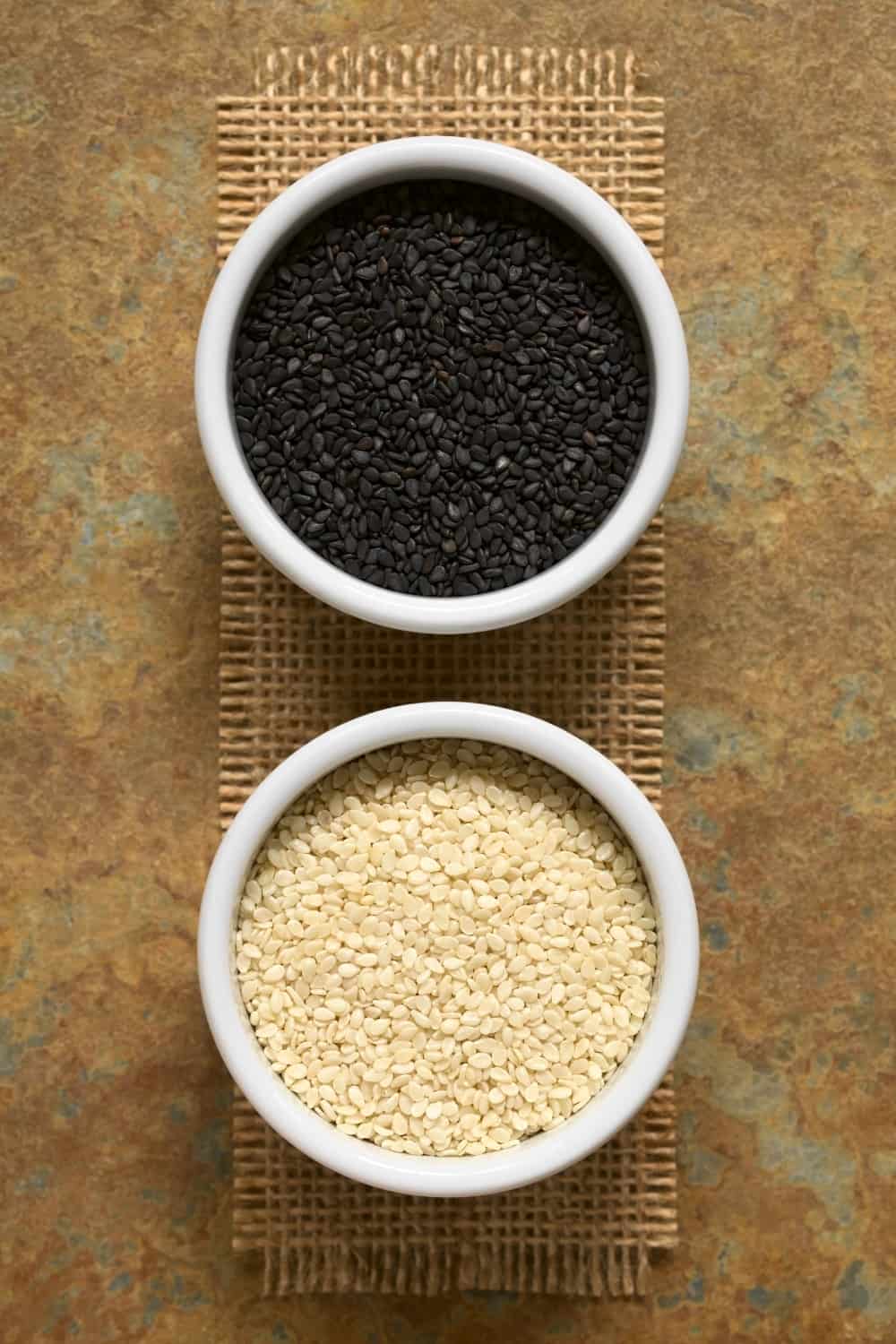
I will start with the fact that there are two major types of sesame seeds, including black sesame seeds and white sesame seeds.
Since they are both sesame seeds, it is logical that they can be substituted for one another in most types of dishes.
However, although they are very similar, some differences between them need to be discussed for you to make the perfect substitute.
The most obvious difference lies in their color. Since sesame seeds are often used for garnishes, different colors might be a problem.
White seeds are most commonly used for this purpose, while the darker color of black seeds may affect the visual appeal of a dish to some extent.
Both types of seeds can be used in cooking and baking. However, you have to consider their slightly different flavor.
Namely, black sesame seeds have a more intense, nuttier flavor than white seeds, which are a bit sweeter. So when making a sweet dish, it is recommended to choose white sesame seeds.
The final difference lies in the fact that black seeds are slightly more nutritious.
While both types of seeds contain high amounts of calcium, iron, and magnesium, black sesame seeds are slightly higher in fiber and have a higher concentration of certain antioxidants, such as phytosterols and lignans.
Finally, if your recipe requires sesame seeds, take note that it is much easier to find white seeds on the market, so you shouldn’t have any problems getting them.
See Also: 10 Substitutes For Sesame Seeds For Every Opportunity
2. Poppy Seeds
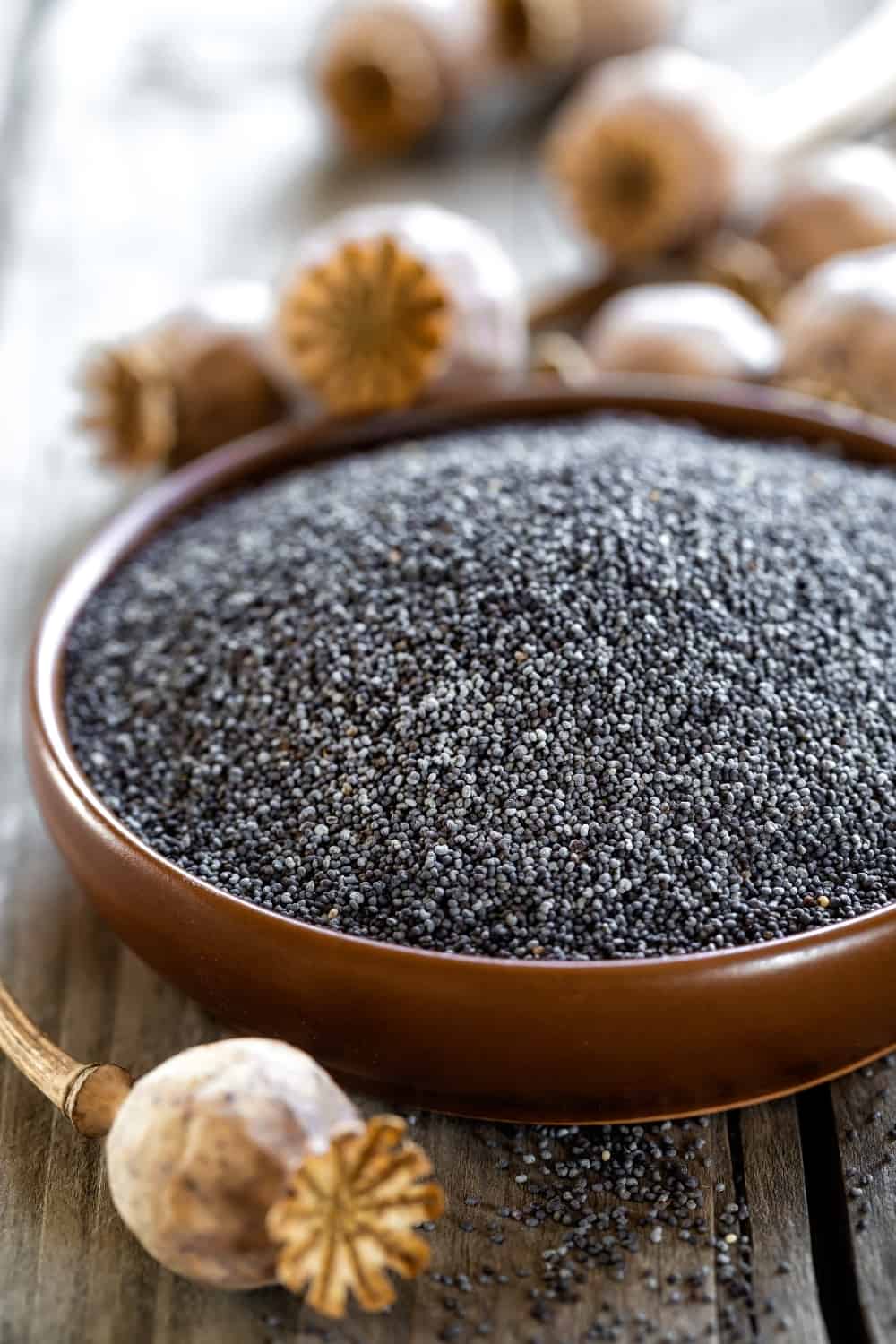
And here is the first type of seed that can be used as a good substitute for our sesame seeds. Poppy seeds are small, kidney-shaped seeds that come from the opium poppy plant and they are commonly used in many cuisines worldwide.
This popular type of food that starts with p can be a great alternative.
Pros:
• Color: Poppy seeds have a similar color to black sesame seeds, so they can be a great substitute if you are making a garnish for your dish.
• Flavor: Poppy seeds have a mild, nutty flavor that is similar to sesame seeds, making them a good substitute in many recipes.
• Nutrition: Like sesame seeds, poppy seeds are also a good source of fiber, calcium, magnesium, and other vitamins and minerals, making them a nutritious alternative.
Cons:
• Slightly More Bitter: Although they have a similar flavor profile to sesame seeds, they are slightly more bitter, which can be a problem in some cases, especially if you are using them instead of sweeter white sesame seeds.
• Shape: Poppy seeds are significantly smaller than sesame seeds, so you’ll need more of them to achieve the same texture and taste.
• Texture: Poppy seeds have a slightly different texture than sesame seeds, which can affect the mouthfeel of a dish. This may not be noticeable in all recipes but could be important in some.
How To Use Them As A Substitute:
Poppy seeds can be used in almost all types of dishes that require sesame seeds. This is especially the case with black sesame seeds as they are more similar in flavor.
Poppy seeds go well in stir-fried dishes where you can achieve a milder aroma but stronger flavor of your dish.
You can also add them to salad dressings, bread toppings, pancakes, and other snacks.
Keep in mind that poppy seeds are slightly smaller and denser than sesame seeds, which can affect the texture of the finished dish.
If texture is important in your recipe, you may want to consider toasting or grinding the poppy seeds to create a texture that is more similar to sesame seeds.
Also, don’t add too much of them, especially if you are making some type of sweet dish because they have a more bitter flavor when compared with sesame seeds, especially white ones.
3. Sunflower Seeds

I believe that you are familiar with this one since sunflower seeds are native to North America and have been a popular food source for many cultures for thousands of years. They come from the sunflower plant (Helianthus annuus).
Pros:
• Umami Flavor: Probably the biggest advantage of using sunflower seeds as a substitute for sesame seeds is the fact that they have a similar umami flavor, which makes them a good substitute in many recipes.
• Nutrition: Sunflower seeds are also quite nutritious and they contain high amounts of protein, healthy fats, and fiber, as well as antioxidants and some vitamins and minerals, including vitamin E, magnesium, and selenium.
• Availability: It is relatively easy to find sunflower seeds, especially salted ones, in most grocery stores and supermarkets.
Cons:
• Not So Nutty: Although they have a slightly nutty flavor, it is not enough to meet the criteria in terms of the nuttiness of sesame seeds.
• Different Shape And Size: Sunflower seeds are larger and more oblong in shape than sesame seeds, which can affect the appearance of the finished dish. This may not matter in all recipes but could be important in dishes where visual appeal is important.
• Different texture: Sunflower seeds are also slightly softer and have a different texture than sesame seeds.
How To Use Them As A Substitute:
Sunflower seeds are one of the most versatile seeds out there and you really can’t go wrong adding them to most types of dishes.
However, when using them as a substitute for sesame seeds, it is best to incorporate them into baking recipes, salads, and occasionally as a garnish or topping for stir-fry and similar savory dishes.
You can also use them as a snack instead of sesame seeds. Toasted sunflower seeds, on their own or mixed with other nuts and seeds, make a great snack.
You can also make sunflower seed butter, similar to peanut butter, and use it as a spread on toast, in smoothies, or as a dip for fruits and vegetables.
I wouldn’t recommend you use them as a substitute in rice, since the flavor isn’t all that similar and they aren’t suitable for some things like rice balls and sushi, which commonly include sesame seeds.
4. Hemp Seeds
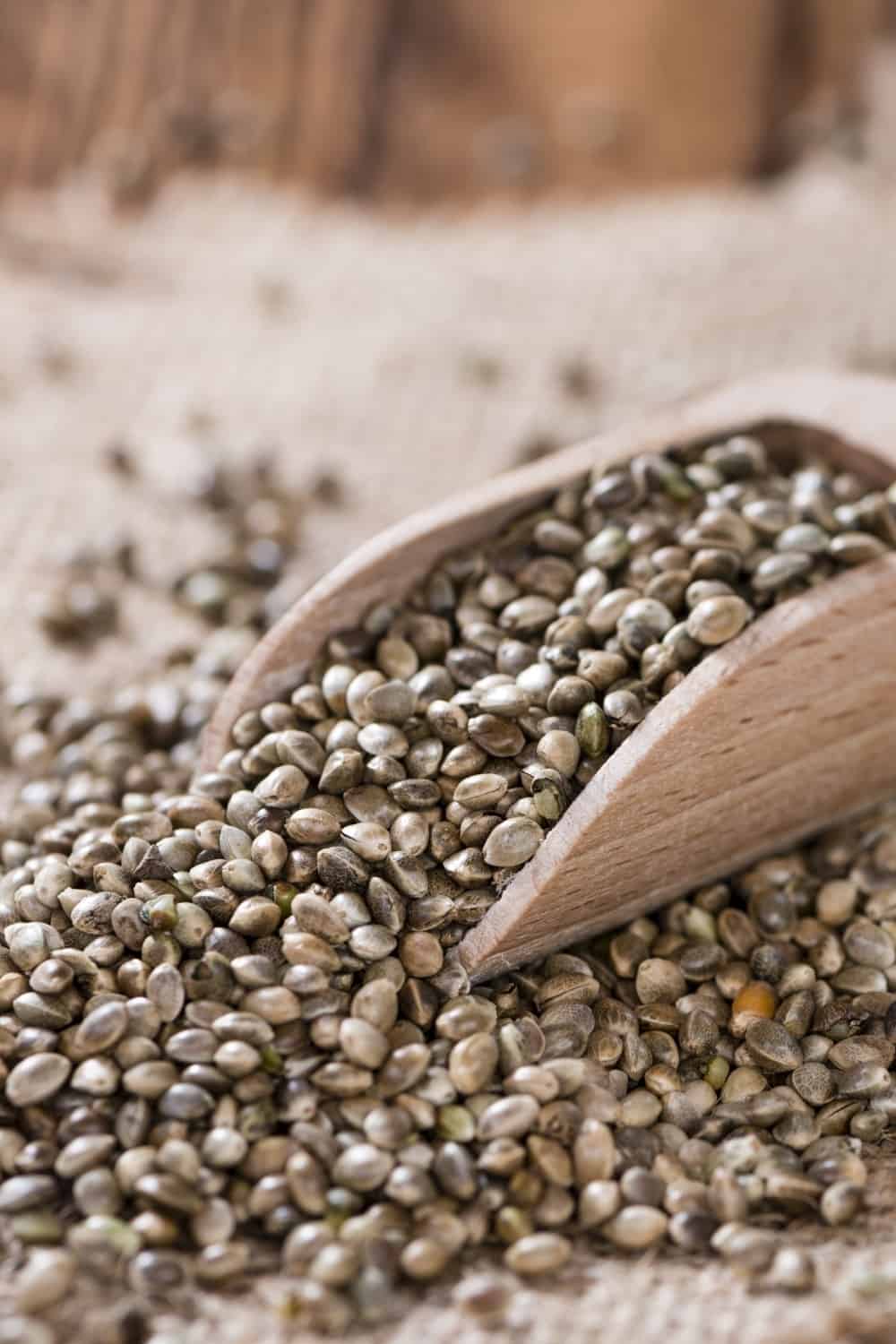
If you are into nutrition, you are probably familiar with hemp seeds, as they are one of the most nutritious seeds. Also known as hemp hearts, these seeds come from the hemp plant (Cannabis sativa) and can be a decent substitute for sesame seeds.
Pros:
• Huge Nutritional Value: Hemp seeds are a nutritional powerhouse, containing protein, healthy fats, fiber, and essential vitamins and minerals. They also contain a balance of omega-3 and omega-6 fatty acids, which can help support heart health.
• Allergy-friendly: Hemp seeds are a great option for those with sesame allergies or other dietary restrictions, such as gluten-free or vegan diets.
• Similar Flavor Profile: Hemp seeds also have the same specific nutty flavor as sesame seeds, which makes them a great addition to many similar recipes.
Cons:
• Different texture: Hemp seeds are slightly larger and have a different texture than sesame seeds, which may affect the texture of the finished dish.
• Availability: It is not so easy to find hemp seeds in ordinary grocery stores, although they are becoming more widely available recently. However, you can always find them in many specialty food stores.
• Higher cost: Hemp seeds can be more expensive than sesame seeds, which may not make them a practical option for some budgets.
How To Use Them As A Substitute:
Hemp seeds are similar in shape and size to sesame seeds and they also have the same nutty flavor, so it is logical that they can be used in many dishes that require sesame seeds.
They are often added to baked goods, salads, yogurts, and other dishes as toppings. You can also use them in many cooked dishes if you want to achieve that similar nutty flavor.
Hemp seeds work really well for making dips and spreads. You can use them to make hummus, baba ganoush, or tahini by blending them with other ingredients.
Finally, if you are making some type of Asian or Middle Eastern dish, hemp seeds can be a great choice, especially for stir-fries.
However, like the other substitutes, they won’t look or taste right in sushi and are mediocre as a rice garnish for simpler rice dishes.
5. Flax Seeds
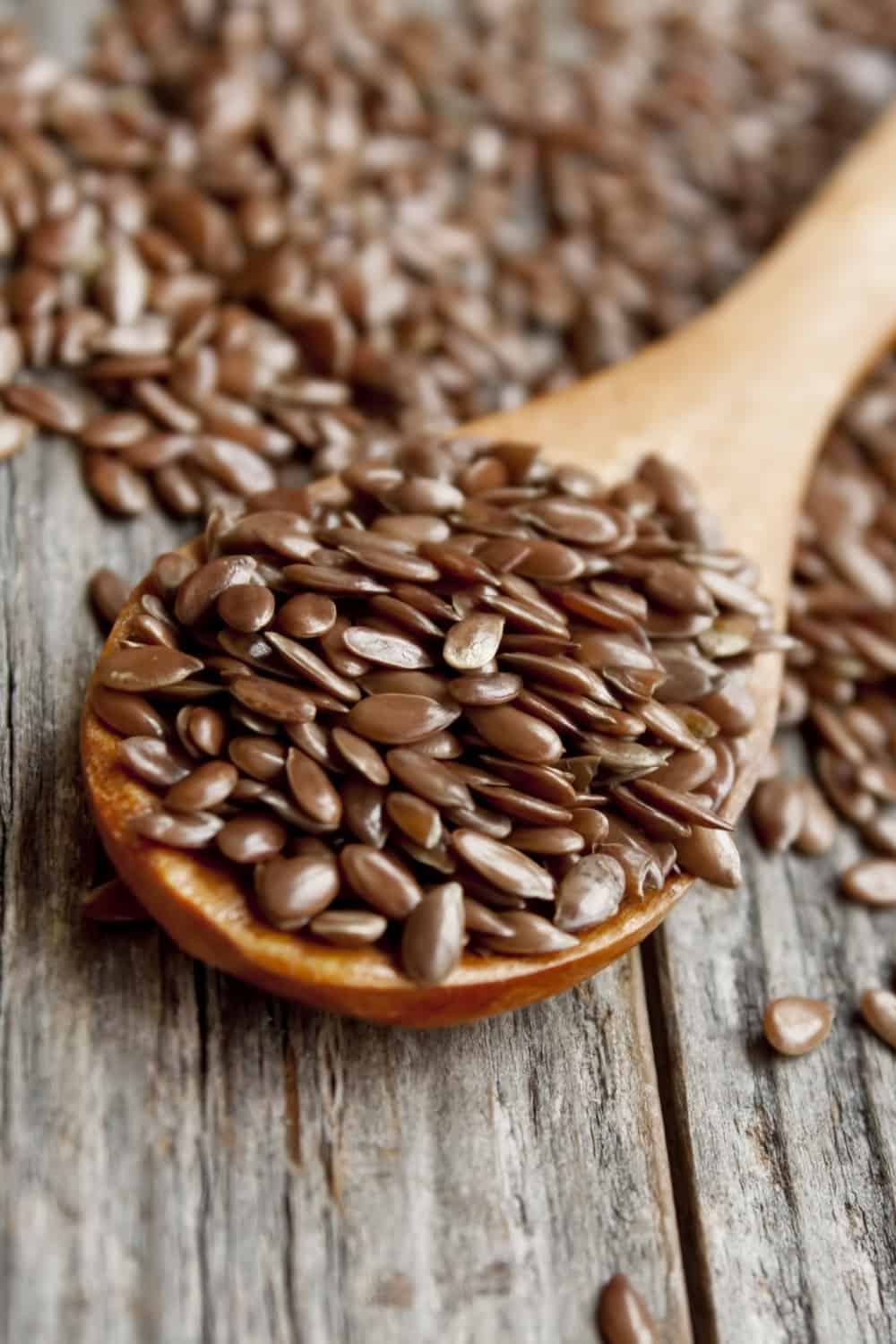
These tiny, golden seeds known as flax seeds come from the flax plant (Linum usitatissimum). They are also very nutritious and are even considered a superfood. Although not a perfect substitute, they have something to offer.
Pros:
• Nutritional Value: Flax seeds are a great source of omega-3 fatty acids, fiber, lignans, and other beneficial nutrients. They offer similar health benefits as sesame seeds, with even higher amounts of certain nutrients in some cases.
• Availability: Nowadays, flax seeds are not only sold in specialty food stores, but you can also find them in many grocery stores and supermarkets.
• Versatility: Flax seeds can be used in various dishes.
Cons:
• Different flavor: While flax seeds have a nutty flavor, it is not exactly the same as the distinct sesame seed flavor. Depending on the recipe, the substitution may result in a slightly different flavor profile.
• Different Texture: Flax seeds are larger than sesame seeds and they have a firmer, chewy texture, which can negatively impact the overall texture of your dish.
• Different Preparation: Flax seeds usually need to be grounded first and then added to the dish because, only then can they release their flavor and nutrition.
How To Use Them As A Substitute:
First things first, flax seeds should be grounded before adding them to any dish.
Once you do that, you can use these seeds in baking goods, including bread, muffins, or cookies to add a nutty flavor and a healthy boost of fiber. In fact, they can serve as a great substitute for bananas in baking.
You can also use some to sprinkle over your salads to add a nutty flavor and crunchy texture. Use them in the same quantity as you would use sesame seeds.
I wouldn’t recommend you to use them as a substitute for tahini, or sesame oil, and they are generally not a good substitute for sesame seeds in things like sushi rice, although some people prefer this.
6. Pumpkin Seeds
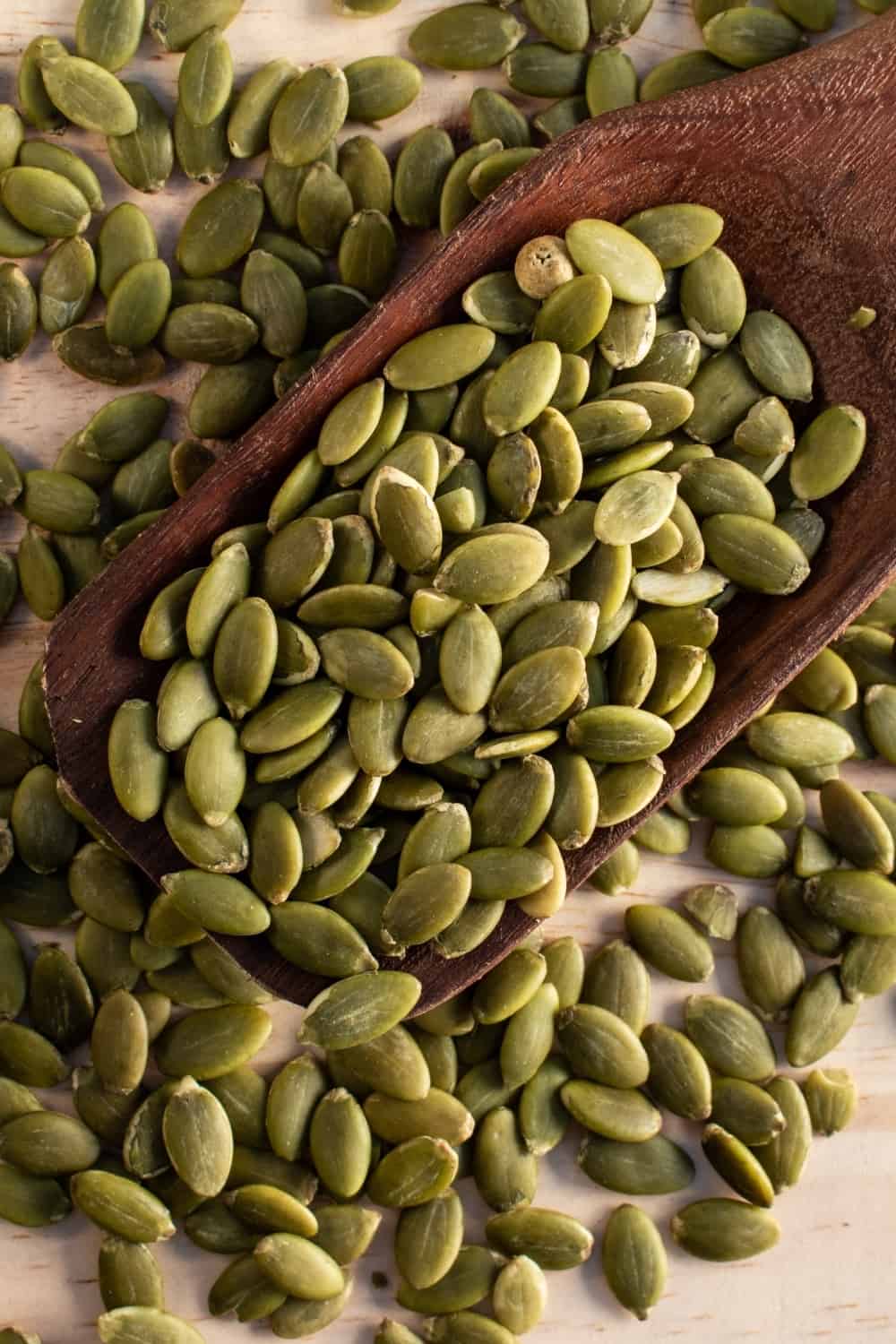
As the name suggests, pumpkin seeds are the edible seeds of the pumpkin fruit, also known as pepitas. Although these foods that start with p have some distinct differences from sesame seeds, they can be used as a substitute, especially due to their similar flavor.
Pros:
• Similar Flavor: The flavor is not exactly the same, but if you are looking to provide your dish with a similar nuttiness to sesame seeds, pumpkin seeds are definitely a great choice.
• Similar Texture: Pumpkin seeds have a similar crunchy texture to sesame seeds, making them a good substitute in some recipes.
• Nutrition: Pumpkin seeds are rich in nutrients such as protein, healthy fats, and minerals like magnesium, zinc, and potassium, making them a very healthy alternative.
Cons:
• Slightly Lower Availability: Although you can find pumpkin seeds in many grocery stores, they are still slightly less available compared to sesame seeds, especially the white variety.
• Higher Price: Although this depends on where you buy them, pumpkin seeds are in general a bit more expensive than sesame seeds.
How To Use Them As A Substitute:
The great thing about pumpkin seeds is that you can use them the same way you use sesame seeds.
They are a great alternative to use in breakfast bowls, stir-fried dishes, cream soups, bread, and noodles.
You can also use toasted pumpkin seeds as a crunchy topping for salads. They work especially well in salads with roasted veggies, grains, or fruit.
Pumpkin seeds can be used for making dips and spreads, just like sesame seeds. For example, you can make pumpkin seed hummus by blending cooked chickpeas, pumpkin seeds, olive oil, lemon juice, and other ingredients.
One more piece of advice. If you want to make them texturally similar to sesame seeds, roast them first and then chop them into smaller pieces.
7. Roasted Pine Nuts
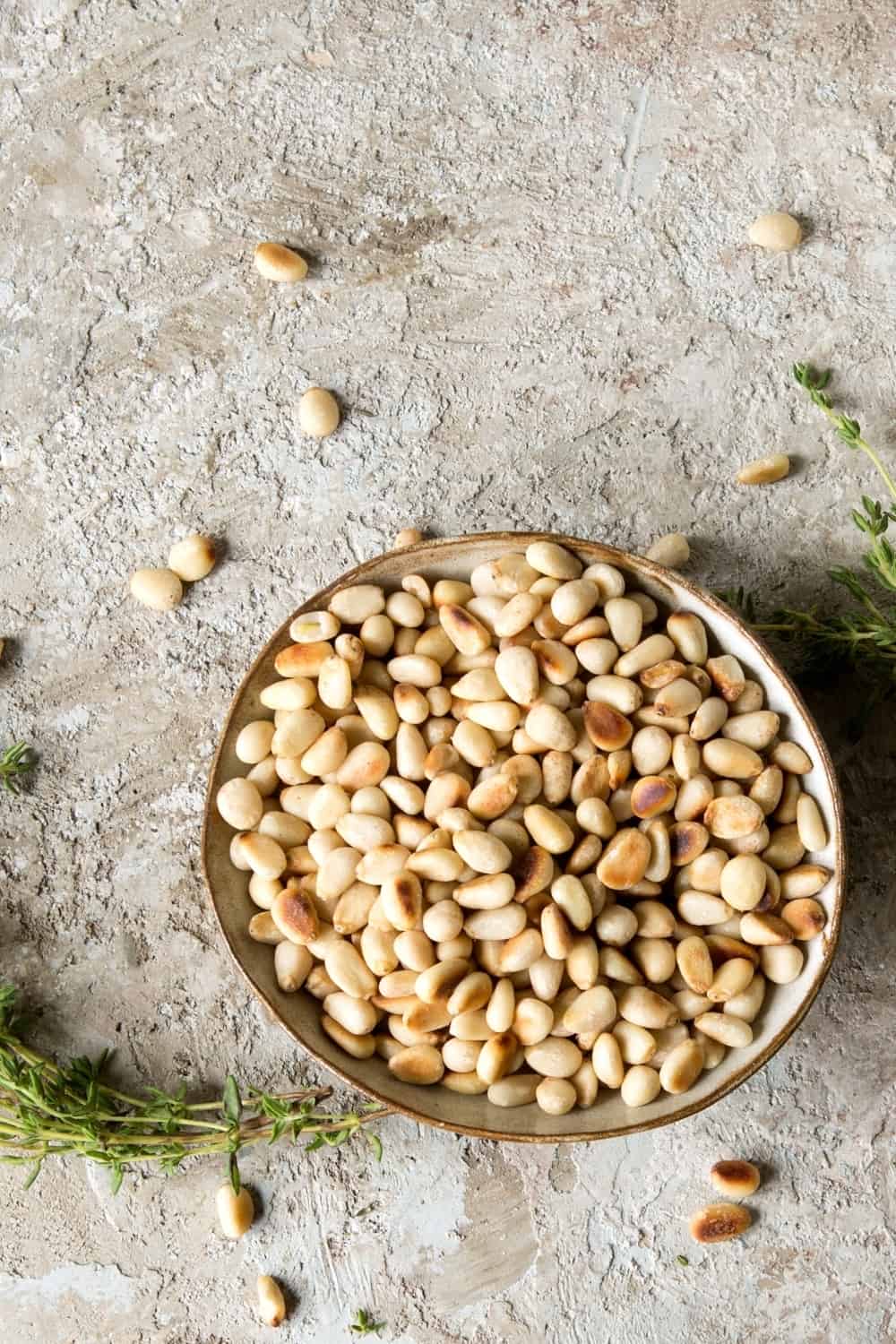
Pine nuts are the edible seeds of pine trees, which are found in several regions around the world, including Europe, Asia, and North America. Raw pine nuts are not ideal, but once roasted, they can be a great alternative for sesame seeds.
Pros:
• Nutty Flavor: Pine nuts have a unique, nutty flavor that can add depth and complexity to a recipe.
• Nutrition: Pine nuts are a good source of protein, healthy fats, and essential minerals. They are also an excellent source of antioxidants, which can have several health benefits, including reducing inflammation and improving heart health.
• Versatility: Pine nuts are versatile and can be used in a variety of dishes, such as pesto sauce, salads, pasta dishes, and baked goods.
Cons:
• Texture: Pine nuts have a softer texture than sesame seeds, which can affect the overall texture of a recipe.
• Higher Price: Pine nuts are generally more expensive than sesame seeds.
• Higher Calories: Pine nuts are higher in calories and fat than sesame seeds, so they may not be the best option for those watching their calorie or fat intake.
How To Use Them As A Substitute:
Pine nuts are a great ingredient in many types of dishes. However, if you buy raw pine nuts, it is essential to slightly roast them first and chop them into small pieces.
This is especially the case if you are planning to use them as a topping, but you can also use them in almost any type of dish that requires sesame seeds because they can provide it with a similar nutty flavor.
You can also use them in salads, pasta dishes, and pesto sauce. Baked goods are also an option, but keep in mind that the texture will be slightly different.
When using them as a substitute, you can freely use the same amount as the recipe requires for sesame seeds.
8. Pistachio Seeds
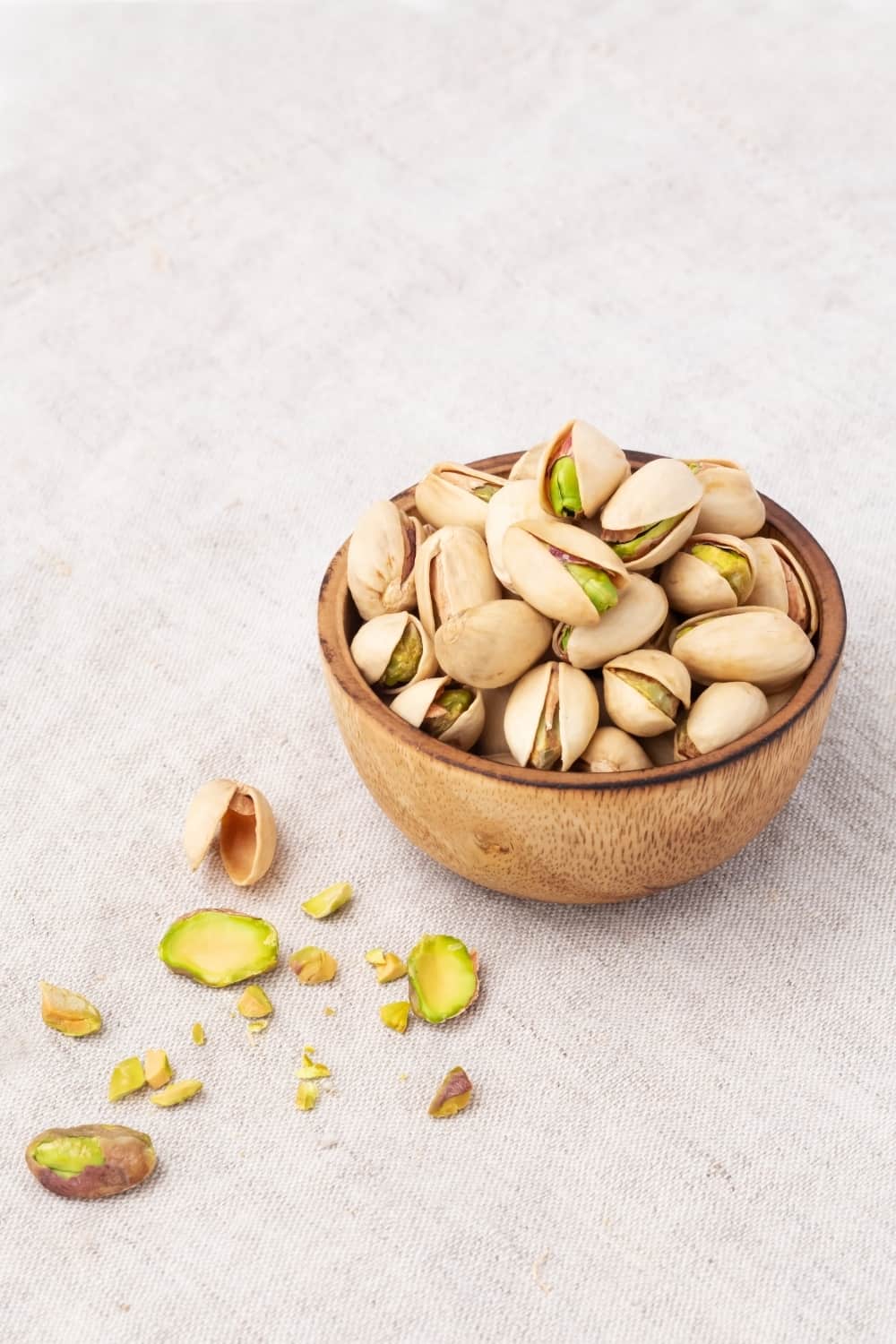
Also known as pistachio nuts, pistachio seeds are the edible seeds of the pistachio tree (Pistacia vera). They are not only consumed as a snack but also used as an ingredient in various dishes. They can also be used as a sesame seed substitute.
Pros:
• Nutty flavor: Pistachio seeds have a nutty flavor that is similar to sesame seeds, which can help you achieve a similar overall flavor of the dish.
• Similar Crunchy Texture: Pistachio seeds have a crunchy texture that is similar to sesame seeds, which can add a desirable texture to your dish.
• Nutrition: Pistachio seeds are a good source of protein, fiber, and other nutrients, which makes them a healthy alternative to sesame seeds.
Cons:
• Stronger Flavor: Pistachio seeds have a stronger flavor than sesame seeds, which can easily overpower other flavors in the dish.
• Availability: Pistachio seeds are not as widely available in grocery stores and supermarkets as sesame seeds.
• Cost: Pistachio seeds can be more expensive than sesame seeds, which may not be feasible for some budgets. There are many reasons why pistachios are so expensive.
How To Use Them As A Substitute:
When using pistachio seeds as a substitute, they will work best in baked goods because they can provide them with a similar nutty flavor and crunchy texture.
However, you have to consider that they have a stronger flavor, so I would advise you to add a bit less than the recipe requires for sesame seeds.
Also, always chop them, roast them, and then use them in your dish because raw pistachio seeds don’t have the needed flavor and texture.
Aside from baked goods, you can also use pistachio seeds as a topping for salads and yogurt bowls, as well as for making spreads and dips.
If you choose to use them as garnish, take note that they have a different color (green color), which can affect the appearance of your dish.
9. Chia Seeds
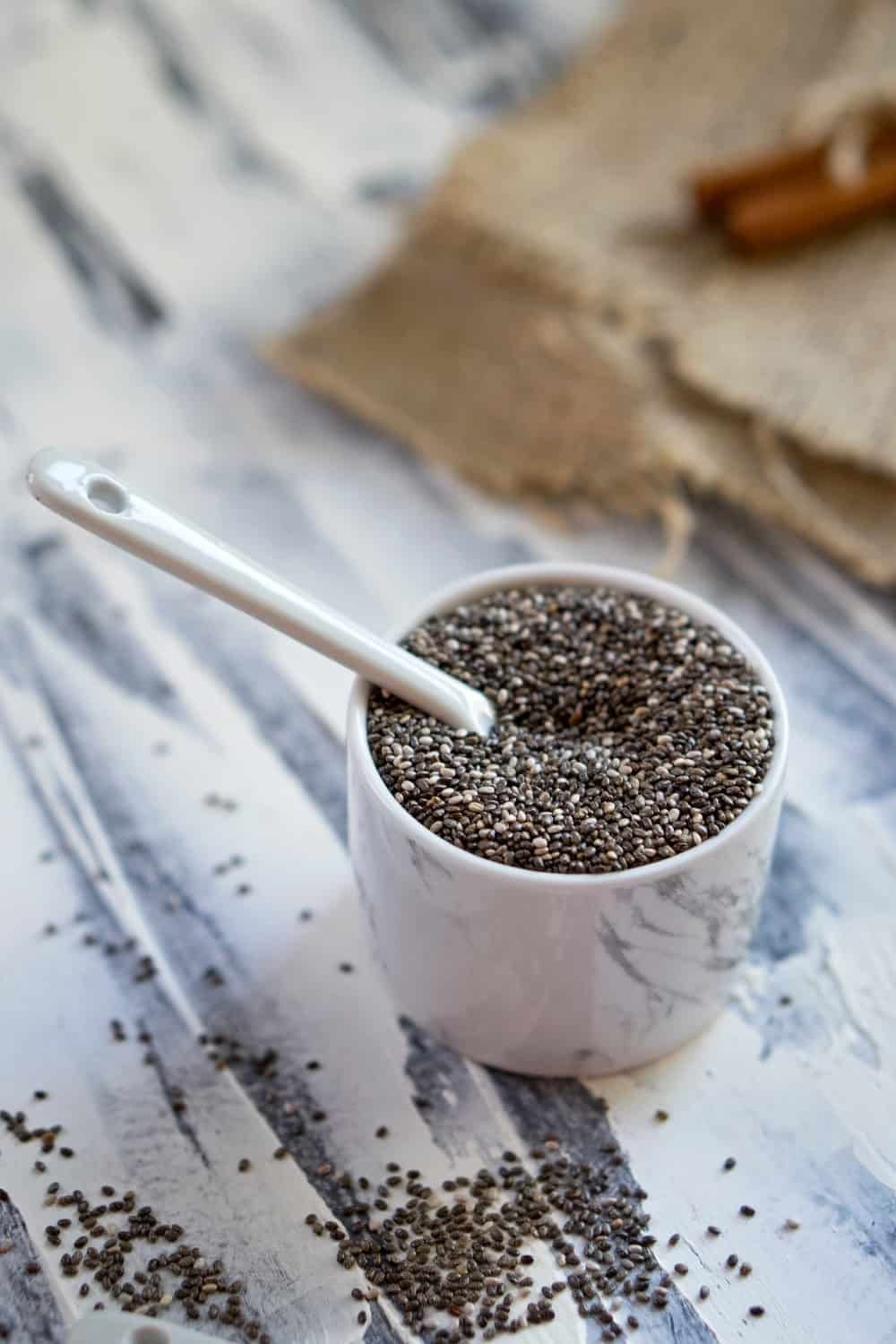
In the world of seeds, chia seeds are slowly gaining a special place due to their phenomenal nutrition properties. Chia seeds come from the plant Salvia hispanica, which is a member of the mint family. It can be a decent substitute in some recipes.
Pros:
• High Nutritional Value: Chia seeds are loaded with antioxidants, and just like sesame seeds, they are high in fiber. They are also full of protein, healthy fats, and various vitamins and minerals.
• Allergy-friendly: Some people may have a sesame allergy and cannot consume sesame seeds so chia seeds can be a good alternative here.
• Long Shelf Life: Chia seeds have a long shelf-life and can be stored at room temperature for several months, making them a convenient pantry staple.
Cons:
• Very Mild Flavor: Chia seeds have a milder flavor than sesame seeds, which can affect the overall taste of the dish.
• Different Texture: Chia seeds have a gelatinous texture when soaked in liquid, which may not be suitable for all dishes. Sesame seeds, on the other hand, have a crunchy texture.
• Availability And Cost: Although chia seeds are becoming much more available in many grocery stores and supermarkets nowadays, it is still more difficult to find them than sesame seeds. Aside from that, they are also more expensive.
How To Use Them As A Substitute:
You can use chia seeds in similar dishes, but you have to remember some important things.
Since the flavor is milder, your dish won’t have that specific nutty flavor that sesame seeds can provide. Also, once you soak chia seeds in water or other types of liquid, they will become larger and more gelatine-like.
Because of that, your dish won’t be as crunchy as with sesame seeds and you will probably have to add a bit less of them because they tend to become larger in the liquid.
You can choose them for breakfasts, salads, and baked goods as toppings and add them to cooked dishes for a little bit of flavor and a huge amount of nutrition. For example, chai seeds are also a great egg substitutes in brownies, as binder agent.
However, my recommendation is to use them in certain dishes, such as puddings and smoothies, because of their gelatine-like consistency.
10. Sesame Oil

Well, this one is quite obvious since it is just another form of sesame seeds, i.e. oil derived from sesame seeds. It is obvious that it won’t provide your dish with the same texture and consistency, but it has other advantages.
Pros:
• Flavor: Although a bit stronger, sesame oil has a similar nutty flavor to sesame seeds, which can help to maintain the overall flavor of the dish.
• Versatility: Sesame oil can be used in a wide range of dishes, from stir-fries and marinades to dressings and sauces.
• Longer Shelf Life: If stored properly, sesame oil can last over 1 year (like many other oils like canola oil for example), which is a bit longer when compared with sesame seeds.
Cons:
• Different Texture: Sesame oil is a liquid and doesn’t have the same crunchy texture as sesame seeds. This may be a downside for dishes that rely on sesame seeds for their texture.
• Higher Price: Sesame oil can be more expensive than sesame seeds, which may not be feasible for some budgets.
• Nutritional Value: Sesame oil is also healthy since it contains a lot of healthy fats. However, it is depleted of protein, fiber, and some other nutrients which are present in sesame seeds.
How To Use It As A Substitute:
Although it is just another form of sesame seeds, it is not recommended to use sesame oil in all recipes that require sesame seeds.
First, it won’t provide your dish with that specific crunchy texture, so you don’t want to add it to dishes where the texture is important.
Second, sesame oil also has that nutty flavor but it is much stronger, so it can easily overpower other flavors in your dish, especially if you add too much of it.
So, my recommendation is to use it in salads, stews, and stir-fries, just in lower amounts. You can also use it in marinades, dressings, and sauces.
Avoid using it in baked dishes because of the different textures and the fact that it tends to burn faster than other oils.
One more thing. When using sesame oil as a substitute for sesame seeds, it’s best to use untoasted sesame oil, which has a milder flavor than toasted sesame oil.

